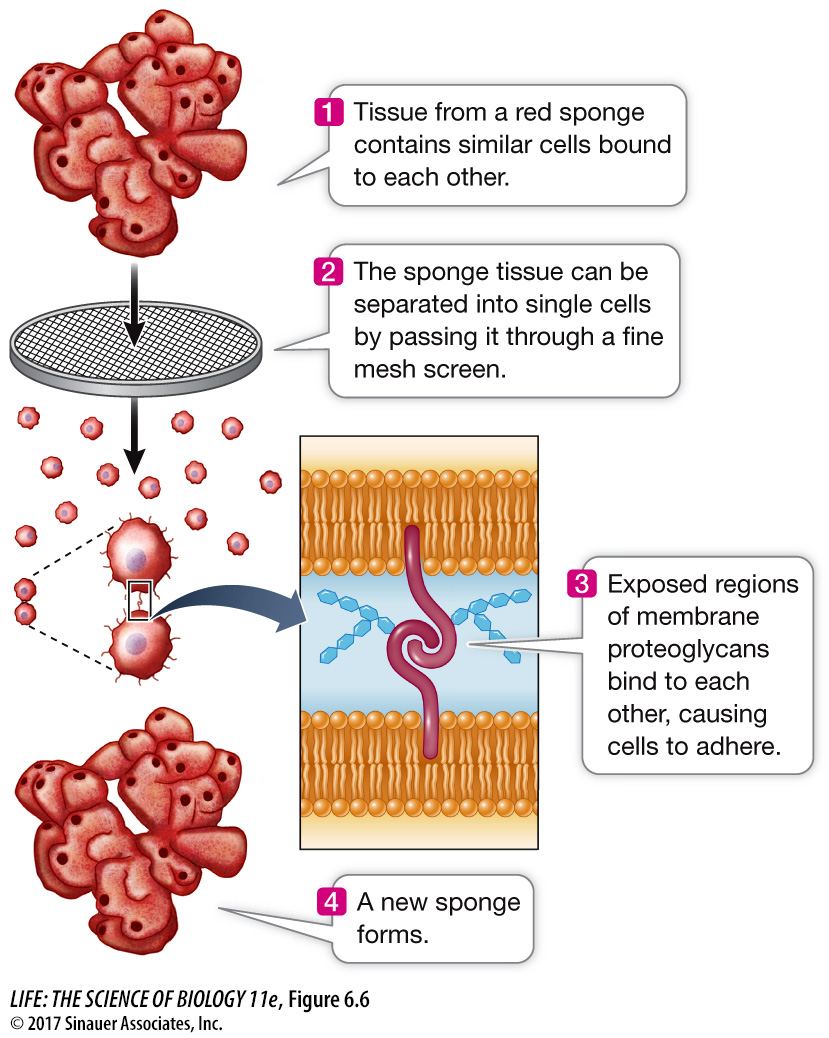key concept6.2The Cell Membrane Is Important in Cell Adhesion and Recognition
Often the cells of multicellular organisms exist in specialized groups with similar functions, called tissues. Your body has about 60 trillion cells organized into various kinds of tissues—
Cell recognition, in which one cell specifically recognizes and binds to another cell of a certain type
Cell adhesion, in which the connection between the two cells is strengthened
Both processes involve the cell membrane. One way to study these processes is to break down a tissue into its individual cells and then allow them to adhere to one another again. This type of experiment is most easily done in relatively simple organisms, such as sponges, which provide good models for studying processes that also occur in the complex tissues of larger species.
focus your learning
Cell adhesion and cell recognition are specific and depend on protein and carbohydrate molecules present on the cell membrane.
After two cells recognize and bind to one another, they can contribute additional material to form stable cell junctions that enhance protective, structural, or communication functions in the organism.
Sponges are multicellular marine animals that have only a few distinct cell layers (see Key Concept 30.5). The cells of a sponge adhere to one another but can be separated mechanically by passing the animal several times through a fine wire screen (Figure 6.6). Through this process, what was a single animal becomes hundreds of individual cells suspended in seawater. If such cells are stirred gently for a few hours, cell recognition occurs: the cells bump into and recognize one another, sticking together in the same shape and tissue organization as the original sponge. This recognition is species-

Such tissue-
116